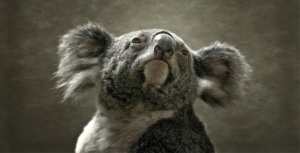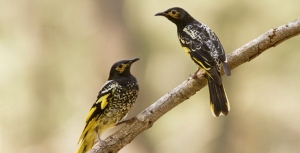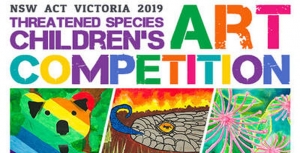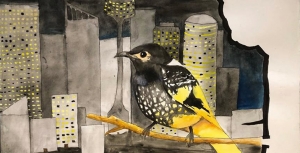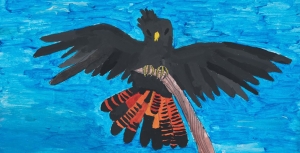Displaying items by tag: threatened species
Further changes to threatened species management under the EPBC Act
The Morrison government has proposed scrapping recovery plans for almost 200 endangered species and habitats. Recovery plans are documents that set out actions needed to stop the extinction of threatened species. Ministers are legally bound not to make decisions that are inconsistent with them. However there is a huge backlog in the finalisation of recovery plans.
In 2020 the Environment Department revealed to a Senate estimates hearing that not one recovery plan had been finalised for 18 months and more than 170 were overdue, e.g. the Blue Gum High Forest recovery plan that has not been completed over the 14 years since it was declared critically endangered.
Instead of a recovery plan a ‘conservation advice’ is written that does not have the same legal force under national law. This has been possible under changes made to the EPBC Act in 2007.
The species and ecological communities to be given priority for a recovery plan are those that are most frequently affected by development and have often been referred for assessment by the minister as to whether the development should not proceed or conditions should be imposed. A prime example is the Cumberland Plain Woodland because of all the development in western Sydney but it is on the list of ecological communities to be downgraded to a conservation advice.
Another example is Blue Gum High Forest. The data provided only covers sites of BGHF on public land. It is important that the conservation advice also applies to private land such as the Mirvac site that includes about 3 ha outside the demolition area. If the conservation advice does not have the same legal status as recovery plans then we are left with council management policies to ensure that endangered species and ecological communities are protected.
The government is asking for feedback on proposed decisions to abandon recovery plans for 185 species and ecological communities. Consultation closes on 2 November 2021.
A Kean eye for extinction: minister’s ‘fortress’ for endangered species crumbles on closer inspection
Earlier this week, NSW Environment Minister Matt Kean claimed he was ‘fortressing’ threatened species from extinction within our national parks reserve system. His announcement was to declare 221 areas of threatened species habitat as Assets of Intergenerational Significance (AIS).
Great! Environment groups joined in congratulating Kean on his ‘intergenerational’ vision before looking at it in any detail.
I wanted to know what exactly the announcement was meant to achieve. The minister’s media headline sounded purposeful: ‘Zero extinctions targets set for NSW National Parks’. But how exactly did the announcement go that further step needed to protect our threatened species in National Parks? After all, aren’t National Parks established to be a ‘fortress’ against threatened species extinction in the first place?
On the day of the announcement, I could find little reference to the exact species or habitats that had been protected. I then asked around my contacts for the ministerial press release. Bingo – a small link in the PDF press release sent me to an online map. It is fair to say, what I stumbled across in that map shocked me.
The most threatened bird species in NSW is the critically endangered Regent Honeyeater. Its habitat in the Burragorang, Capertee and Hunter valleys were not listed as an ‘intergenerational asset’. A curious omission given the $1 million in funding the NSW government has thrown at the species over the past six years.
‘Threatened species fortress’: zero extinction goal for national parks
I then turned my attention to the Blue Mountains, an area where my family has spent decades bushwalking. One of the rarest eucalypt species in the Greater Blue Mountains World Heritage Area, the vulnerable Camden white gum, was also left off the list. There are only two known populations of the species left on the planet. Again, a very strange omission.
Then, in one corner of the Blue Mountains intergenerational asset map, I finally spotted two lesser-known endangered species that had been listed – the Kowmung hakea and Solanum armourense, tenacious little shrubs that grow in the depths of the southern Blue Mountains wilderness. Curiously, only one half of the population for each of these species had been declared an AIS.
I was starting to ask the question. How could such a well-instructed minister simply overlook these species and their known habitats?
It then dawned upon me that these species shared a common fate. Matt Kean’s government plans to flood their World Heritage National Park habitat by raising the Warragamba Dam wall. Indeed, it has been estimated that half the remaining global populations of both the Regent Honeyeater and the Camden White Gum will be drowned by the dam project. And the populations of those little endangered shrubs conveniently left off the intergenerational asset list are also set to go under.
The fact is, Kean has consigned these species to extinction by conveniently forgetting they exist in the very national park he is responsible for. It seems he has handed the control of the Blue Mountains National Park to Stuart Ayres, the Minister for Western Sydney – a man who has claimed the people advocating for the area’s protection in the face of his plans to raise Warragamba Dam wall, such as myself, are engaging in ‘environmental terrorism’.
The environmental movement should be calling out this announcement for the blatant political spin that it is. The devil is always in the detail – and the detail shows Matt Kean is sending some of Australia’s most iconic species towards extinction through what could be called his government’s own form of ‘environmental terrorism’.
This article was published in the Sydney Morning Herald on 10 September and is republished with permission from the author, Rob Pallin. Rob is the chairman of the Paddy Pallin Foundation, a board director of the Colong Foundation for Wilderness and a STEP member.
Postscript
Click here for a map of AIS. There are some noteworthy species on the list that are to be protected by these AIS declarations.
- There are several sites covering the critically endangered Southern Corroboree frog in Kosciuszko National Park. One questions how effective the conservation action can be when there is no effective plan to reduce feral horse numbers. One would have to be an insider in the NPWS to know if there are habitat sites outside the AIS sites that are badly affected by the horses so that these frogs will continue to lose suitable wetland habitats. The horses trample the sphagnum moss resulting in water draining away so that the streams dry out.
- There are several sites of koala habitat around the Port Macquarie area and further north in the AIS list. A more comprehensive method of meeting Kean’s objective of doubling the koala population by 2050 would be to adopt the proposal by the National Parks Association of creating the Great Koala National Park inland from Coffs Harbour. This land is currently state forest subject to intensive logging and has been badly affected by the 2019 bushfires. Private land clearing, particularly on the north coast, is a major factor in the decline of koala populations.
Will the improvement in numbers in the AIS sites make up for the continuing losses elsewhere?
Threatened Species Children’s Art Competition
STEP has supported the Threatened Species Children’s Art Competition since 2017. The competition has been a great success and has now expanded to Victoria, and other states are expressing interest.
Administration has now been taken over by the Humane Society International – the largest worldwide charity caring for animals.
Children choose a threatened native species, then create a drawing or painting of it with an accompanying short explanation of their work. Entries close on 2 August 2019.
Seventy NSW finalists will be chosen for a two-week exhibition in Sydney, with winners announced at Parliament House Sydney on 6 September 2019.
Threatened Species Children’s Art Competition
This year 2749 children participated in the Children’s Threatened Species Art Competition. There were 2397 entries and over 100 schools and programs got involved. The organisers were delighted by the quality of the children's work, their concern for our threatened species, and their desire to make a difference.
The student's challenge is to research and create an artwork on one of the over 1000 threatened species in NSW and the ACT. The finalists’ works can be viewed on Facebook.
The image above expresses the encroaching development on the natural world says it so well for the regent honeyeater. Oscar 11 says:
I was inspired to paint the Regent Honeyeater because I like its bright yellow colours. I have painted it on the last tree in the city. The Regent Honeyeater has been badly affected by land-clearing and is endangered in NSW. At my school we have planted trees for habitat for native small birds.
I noticed that many schools are taking steps like this one to protect habitat for native species. Well done brilliant children and their teachers!
Threatened Species Children’s Art Competition
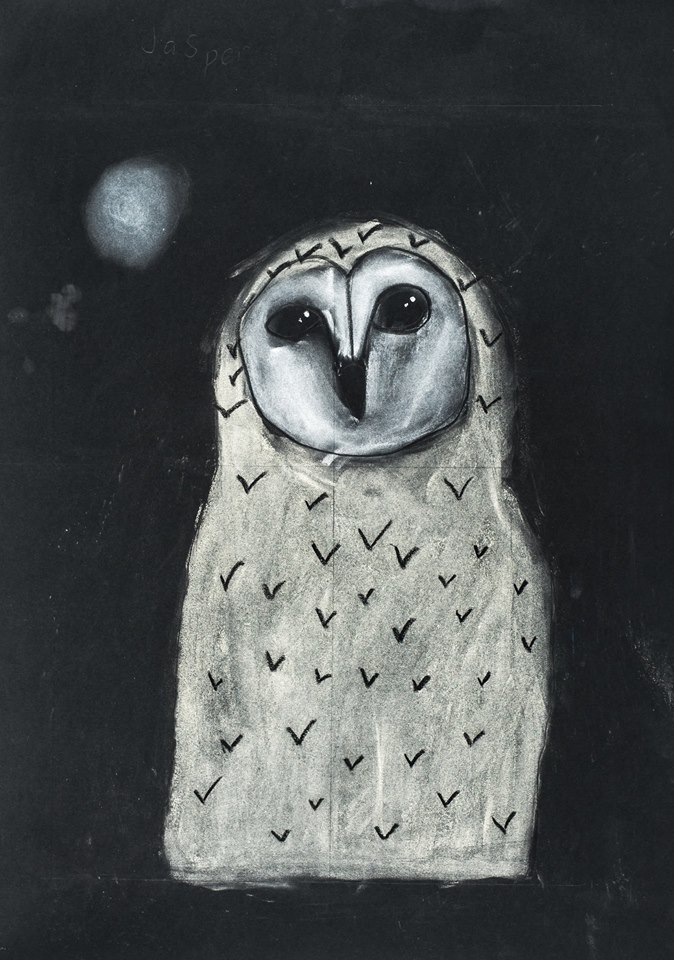 This year, for the first time, STEP supported a great initiative organised by Forestmedia, an organisation that is aiming to increase community awareness of the plight of our threatened species and help to develop the next generation of environmental leaders.
This year, for the first time, STEP supported a great initiative organised by Forestmedia, an organisation that is aiming to increase community awareness of the plight of our threatened species and help to develop the next generation of environmental leaders.
Long-time STEP member and artist, Yvonne Langshaw, helped judge the winners which were announced on 7 September, Threatened Species Day, at NSW Parliament House.
The competition was very well organised and a great success. The fabulous entries were displayed in Surry Hills, the Botanic Gardens and Canberra.
Jake Ferguson won best written work for the summary below:
When I think of a Corrobboree I don't think of a frog. I think of dancing around on the land. But I guess that’s what a frog does. So I chose this frog because it’s native to our land and it has bright yellow Australian colours of our land. Australia's Southern Tablelands and waterways are very important to the life of this frog. Let’s look after them so the frog can keep dancing.


